Mission Complete: Rosetta Probe Relays Photos From Comet 67P
Images from the Rosetta space mission show the first man-made object to land on a comet.
collapse gallery
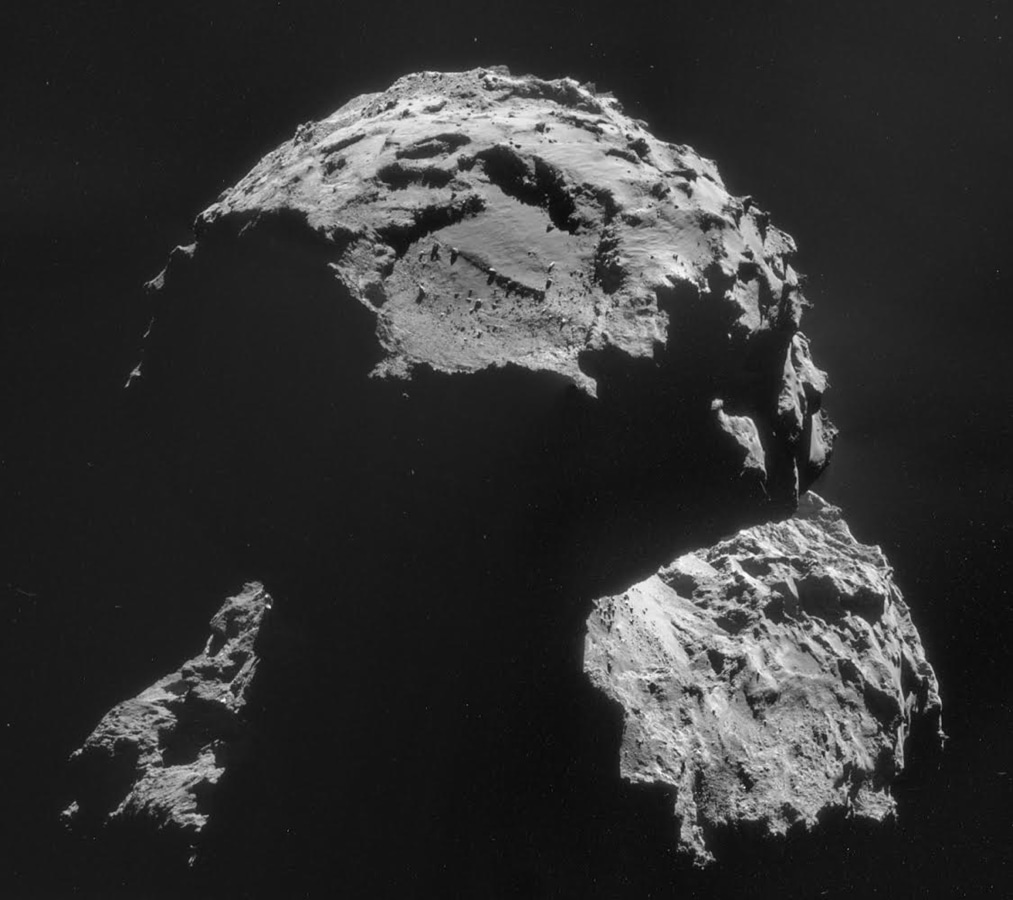
Esa / Getty Images
An image taken from the Philae landing probe of comet 67P/Churyumov–Gerasimenko. The landing probe was part of the Rosetta spacecraft sent by the European Space Agency with the goal of making the first controlled landing on a comet.
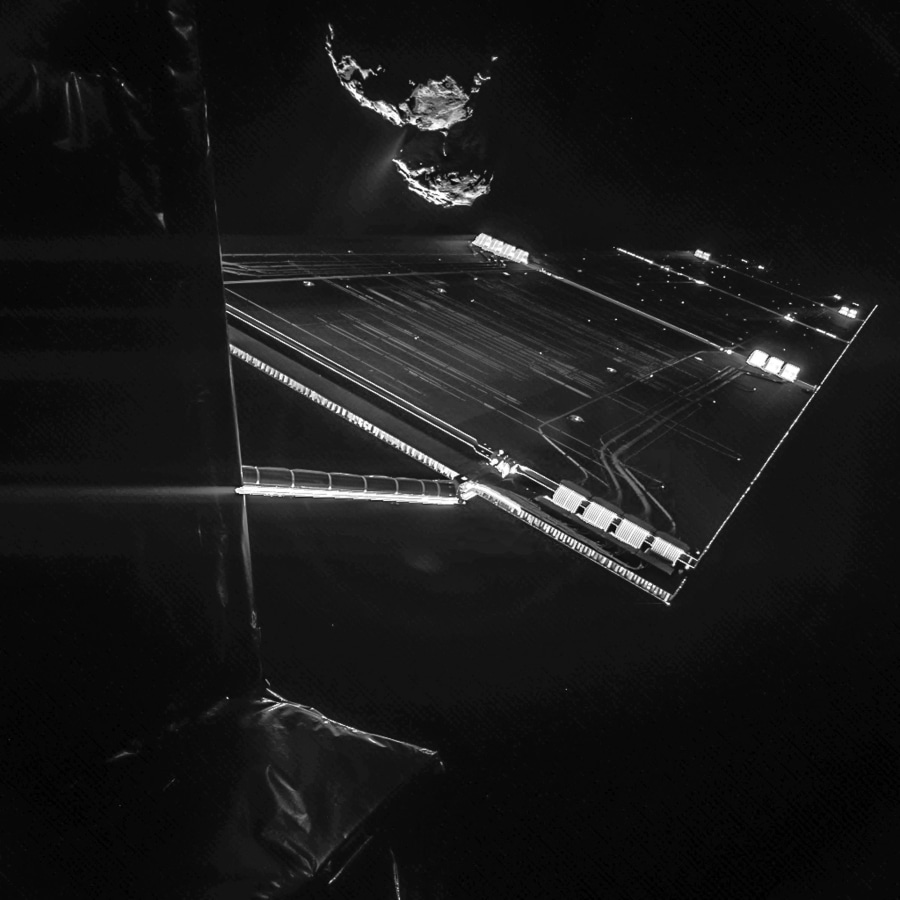
EPA2A solar panel from the Rosetta spacecraft with comet 67P/Churyumov–Gerasimenko in the background. Rosetta was launched March 2, 2004 and reached the comet over a decade later, on Aug. 6 of this year.
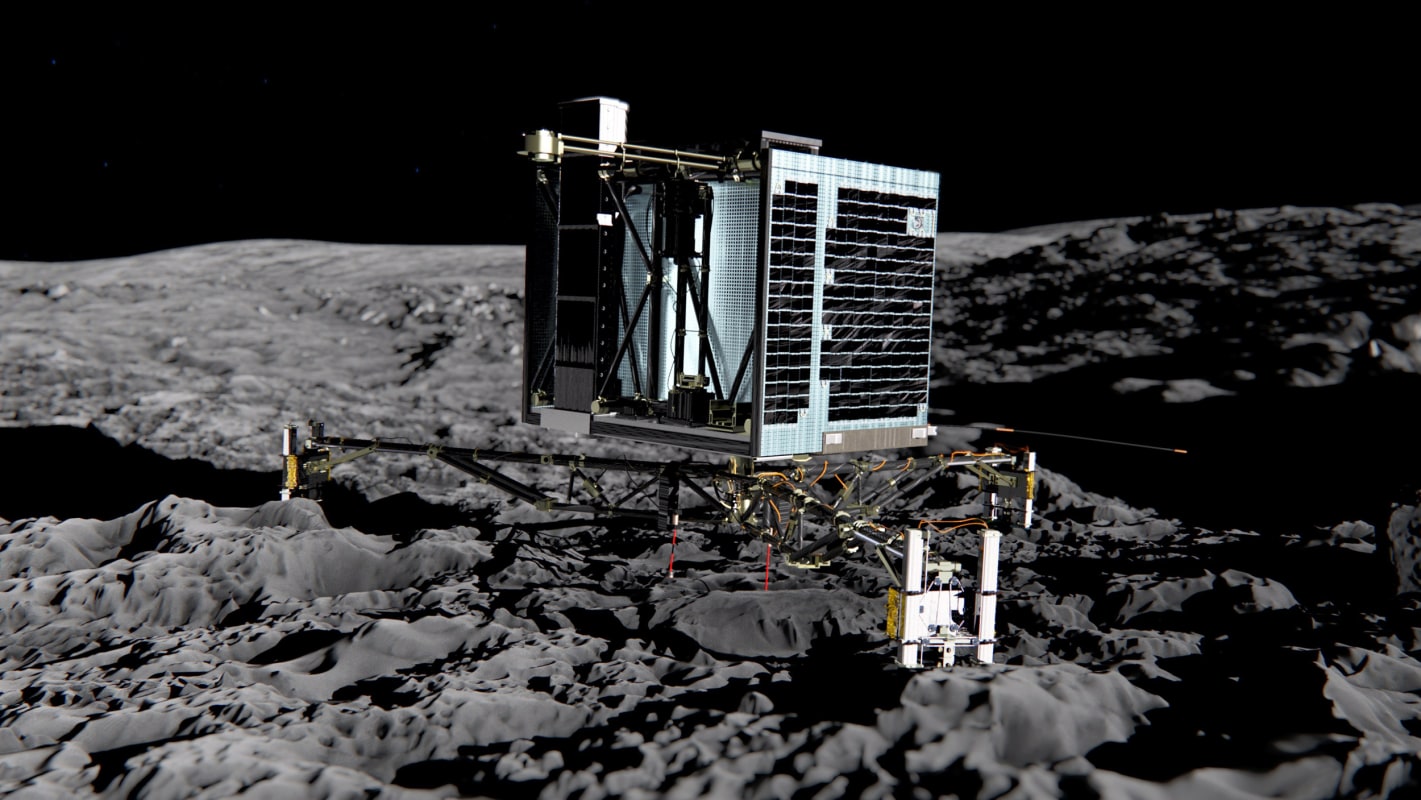
ESA Medialiab / AFP - Getty Images3Aartist impression of Rosetta's lander Philae on the surface of comet 67P/Churyumov-Gerasimenko.The probe will be a laboratory in which tests can be conducted remotely.
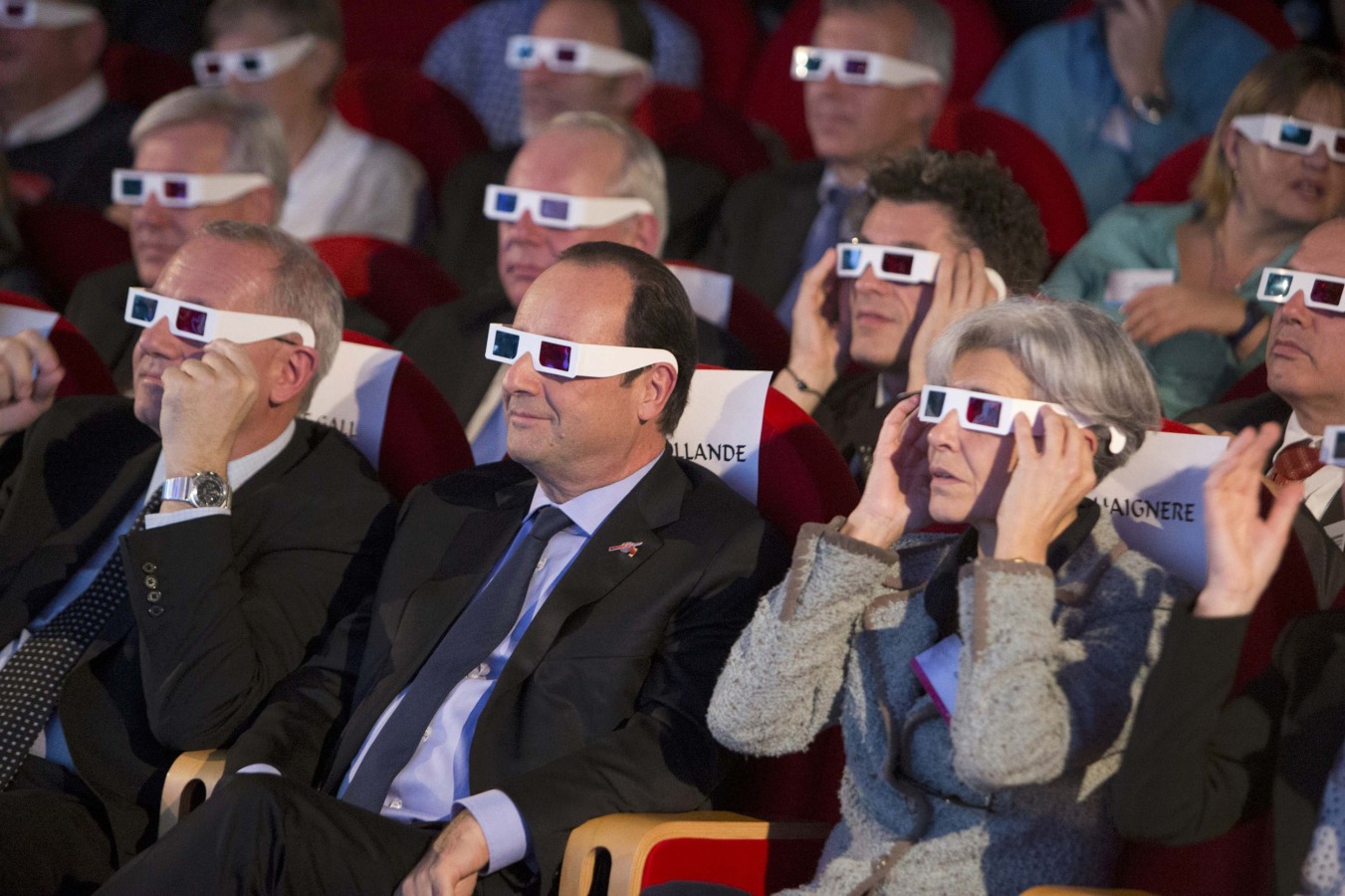
Pool / Reuters4French National Centre for Space Studies (CNES) president Jean-Yves Le Gall (L) French President Francois Hollande (C) and former French astronaut Claudie Haignere wear 3D glasses during a visit at the Cite des Sciences at La Villette in Paris as they follow the successful landing of the Philae lander on comet 67P/ Churyumov-Gerasimenko, Nov.12.
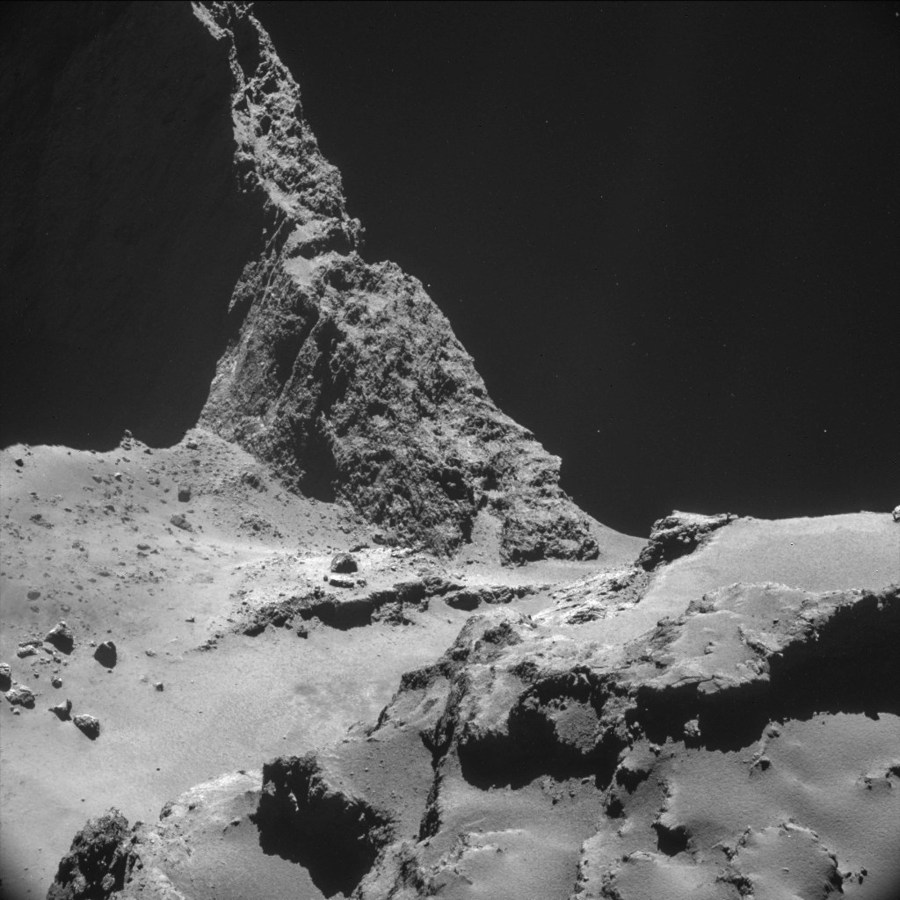
Handout / Reuters5An image taken from a distance of about five miles from the surface of the comet 67P/Churyumov-Gerasimenko. The Philae probe's seven-hour descent on Nov. 11 was viewed by European Space Agency engineers as the most difficult part of the ten-year mission.
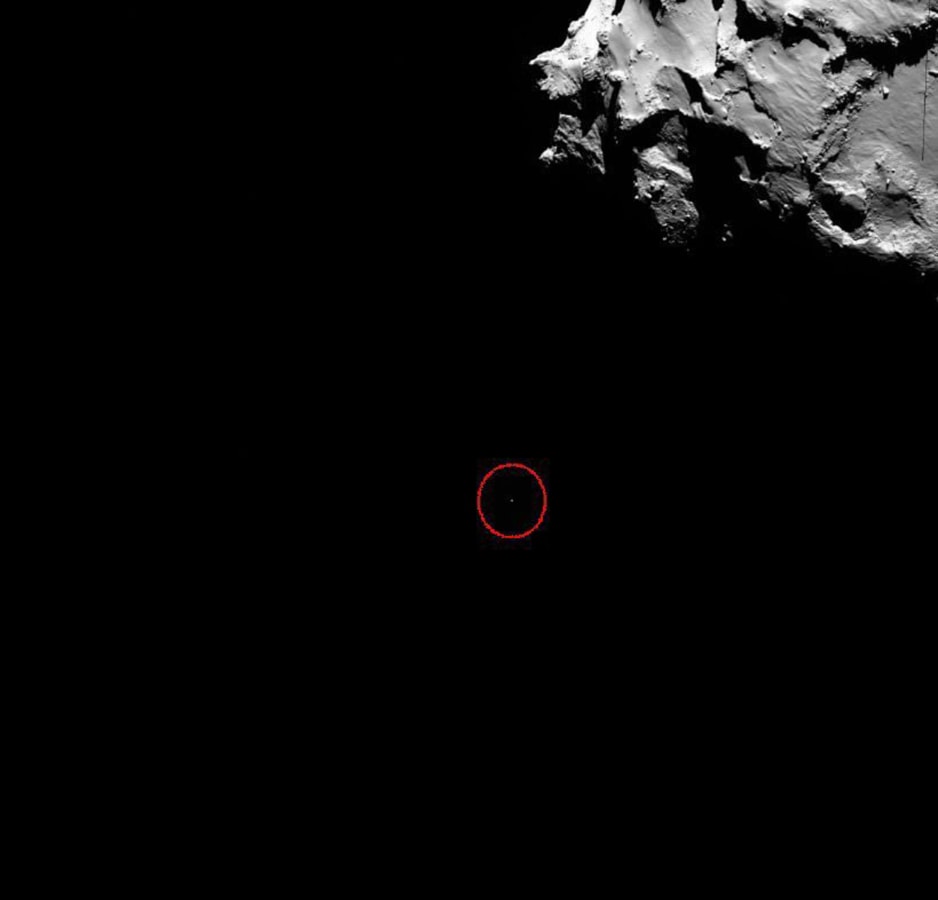
Mps For Osiris Team / EPA7Narrow-angle images were used to try to identify the final touchdown point of Rosetta's lander Philae. It is thought that Philae bounced twice before settling on the surface of the comet.
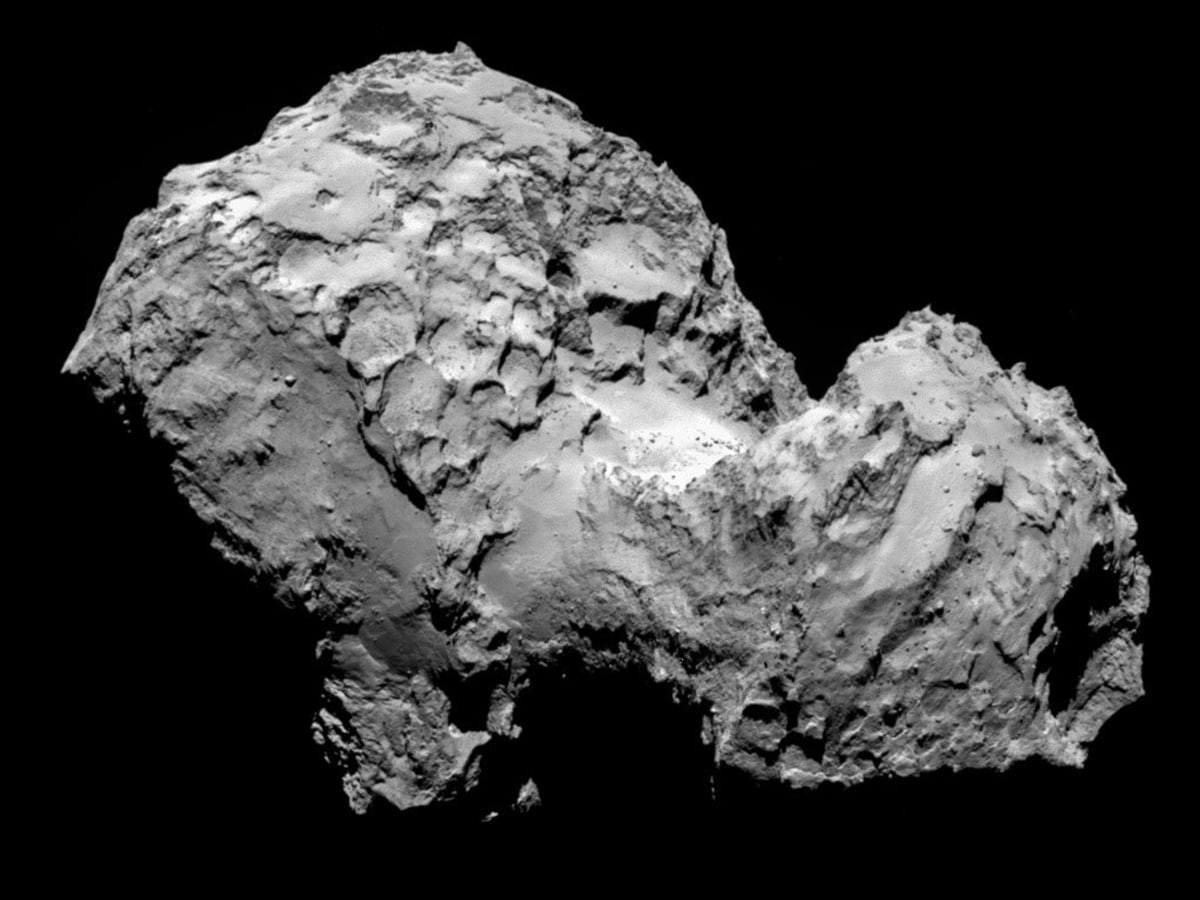
Handout / Getty Images8Another view of Comet 67P, taken with the OSIRIS narrow-angle camera aboard the Rosetta spacecraft.
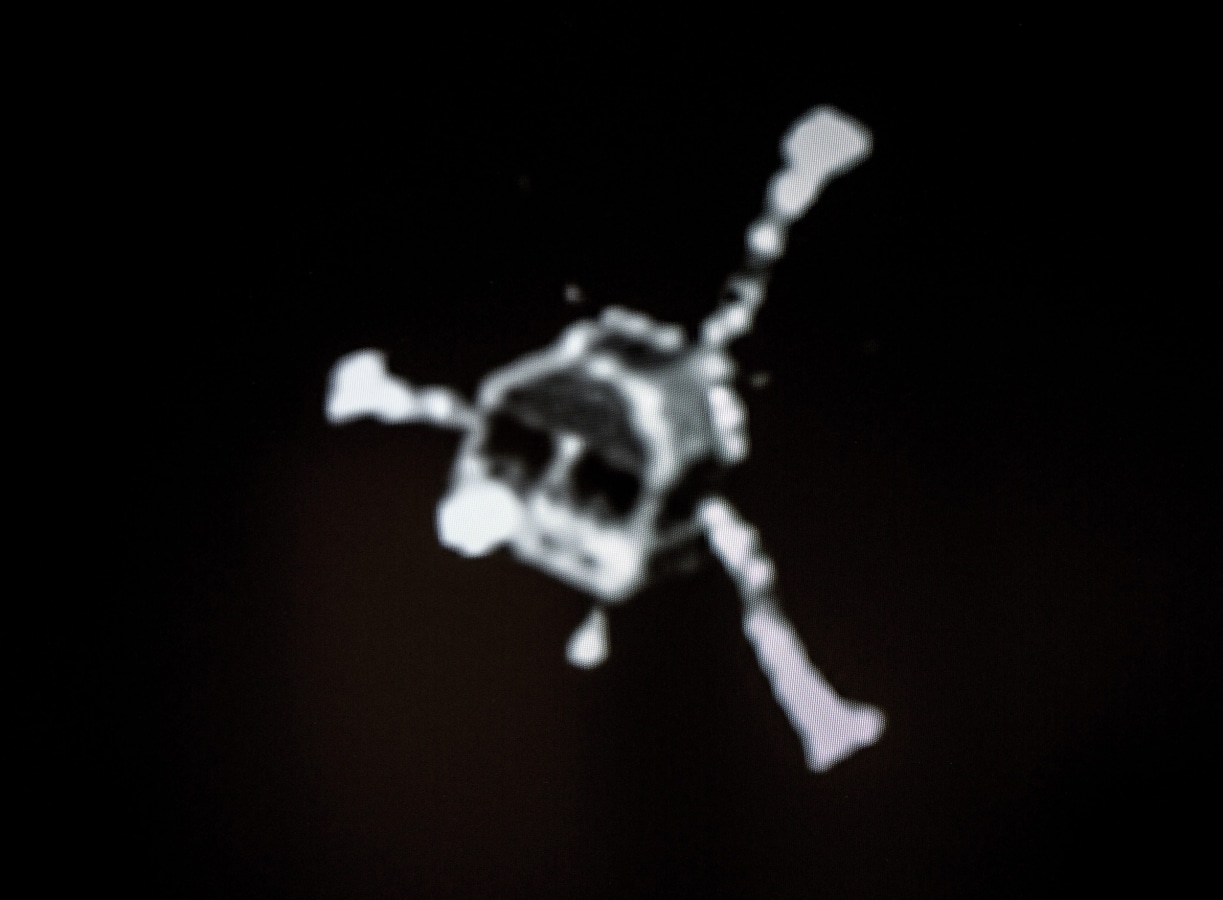
Frankâ Rumpenhorst / EPA11A screen shot of the comet lander Philae, as it leaves the probe Rosetta and falls towards comet 67P marking an end to a ten-year journey.



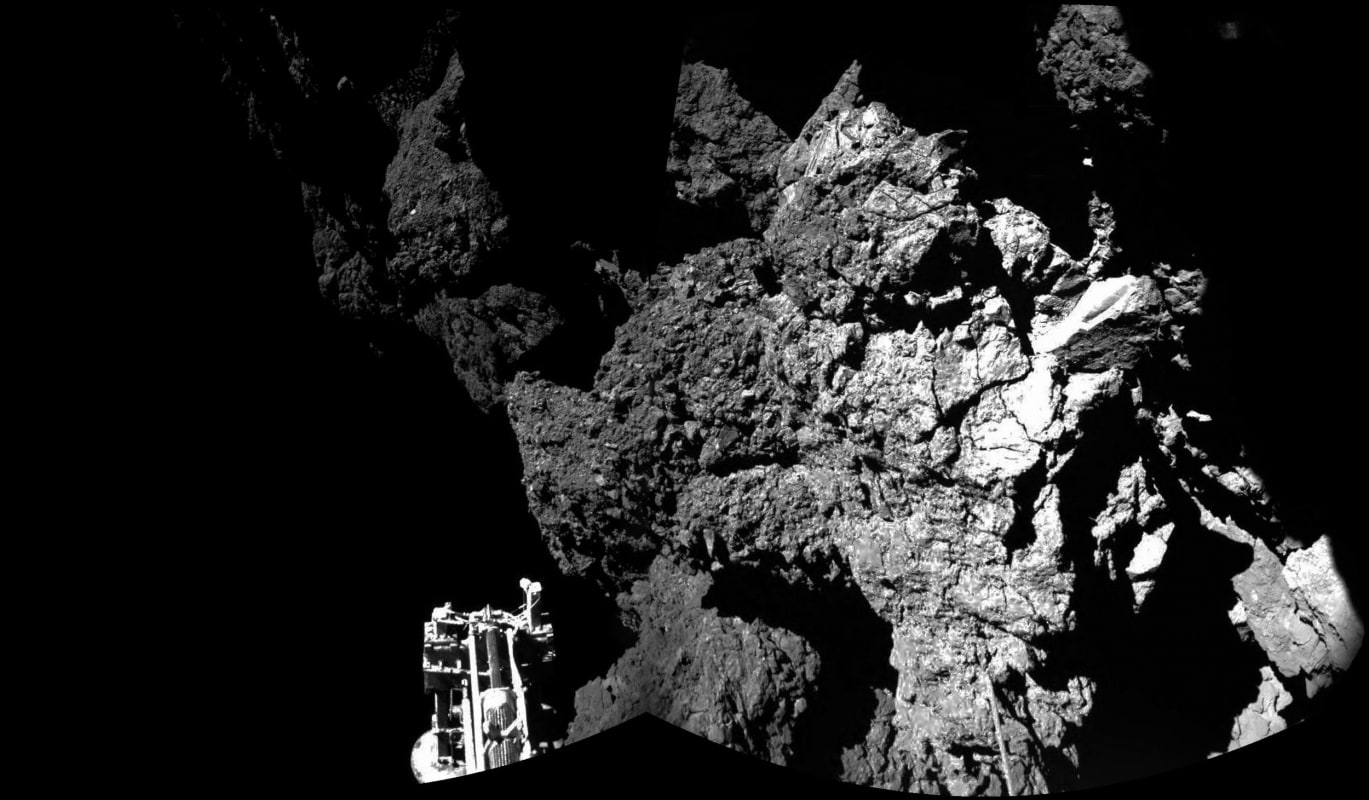
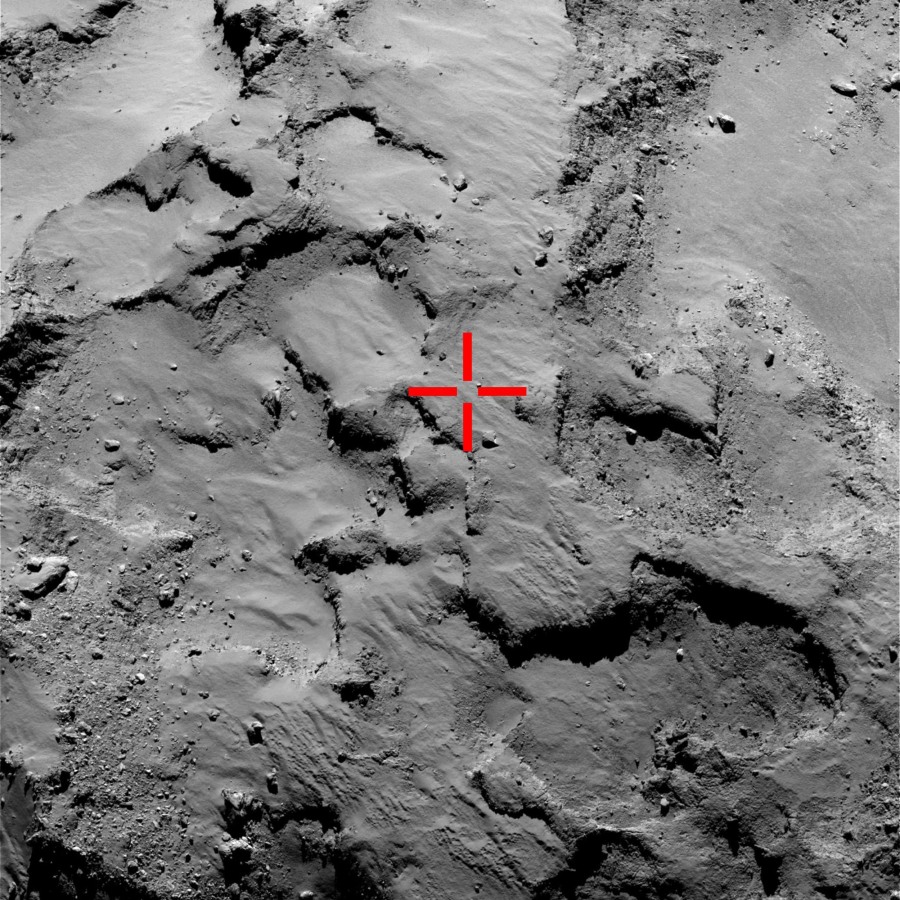
No comments:
Post a Comment